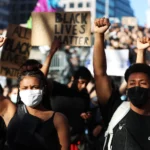Juneteenth, celebrated annually on June 19, is a significant milestone in American history, symbolizing the end of slavery and the ongoing journey toward equality and justice. This article delves into the origin, significance, and broader historical context of Juneteenth, exploring the questions surrounding its naming, the emancipation of slaves, and the complex history of slavery in the United States.
What is Juneteenth and Why is it a Holiday? Juneteenth, also known as Emancipation Day or Freedom Day, commemorates the emancipation of enslaved African Americans in the United States. The holiday marks the day when news of the Emancipation Proclamation reached Texas on June 19, 1865, over two years after it was originally signed by President Abraham Lincoln. Juneteenth celebrates freedom, African American culture, and the ongoing fight for equality.
Who Made Juneteenth a Federal Holiday? On June 17, 2021, President Joe Biden signed into law the Juneteenth National Independence Day Act, officially making Juneteenth a federal holiday. The bill passed with overwhelming bipartisan support, reflecting a growing recognition of the holiday’s historical importance.
Why is Juneteenth Called Juneteenth and Not June 19? The term “Juneteenth” is a portmanteau of “June” and “nineteenth,” combining the month and day on which the holiday is celebrated. The name is a colloquial and regional variation that has become widely accepted and recognized.
Did Slavery End on Juneteenth? While the Emancipation Proclamation was issued by President Lincoln on January 1, 1863, declaring all slaves in Confederate-held territory free, it wasn’t until June 19, 1865, that Union General Gordon Granger arrived in Galveston, Texas, to enforce the proclamation and announce the end of slavery in Texas.
How Many Slaves Were Freed on June 19, 1865? The exact number of slaves freed on June 19, 1865, is not well-documented, but it is estimated that there were thousands of enslaved individuals in Texas at the time.
Was Texas the Last State to Free the Slaves? Yes, Texas was the last Confederate state to receive the news of the Emancipation Proclamation and, consequently, the last state to officially free the slaves.
Which State Was the First to Free Slaves? Delaware was the first state to abolish slavery through gradual emancipation, starting in 1777. By 1865, Delaware had officially freed all enslaved individuals.
How Many Slaves Were Actually Freed by the Emancipation Proclamation? The Emancipation Proclamation declared all slaves in Confederate-held territory free. However, its immediate impact varied depending on the Union’s military presence in different regions. The proclamation set the stage for the abolition of slavery and inspired many enslaved individuals to seek freedom.
Historical Context of Slavery:
- What Year Did Slavery Start? Slavery in what would become the United States began in the early 17th century, with the arrival of the first enslaved Africans in Jamestown, Virginia, in 1619.
- Who Brought Slaves to the US? The first enslaved Africans were brought to the English colonies in North America by Dutch traders aboard the ship “White Lion” in 1619.
- What Kind of Names Did Slaves Have? Enslaved individuals often had names given to them by slaveholders, reflecting a mix of African, European, and biblical influences.
- Who Were the First Slaves Brought to America? The first enslaved Africans brought to America arrived in Jamestown, Virginia, in 1619.
- Who Sold African Slaves to the Portuguese? African kingdoms and tribes engaged in the transatlantic slave trade, selling captives to European powers, including the Portuguese.
- How Were Slaves Captured in Africa? Slaves in Africa were often captured through warfare, raids, or kidnapping, with various African societies participating in the capture and sale of individuals.
White Slavery and Barbary Pirates:
- Were There White Slaves in the United States? Yes, there were instances of indentured servitude and forced labor among European immigrants, but the conditions were distinct from the chattel slavery endured by African Americans.
- When Did White Slaves End? White indentured servitude in the United States gradually declined by the late 17th century, with the rise of African chattel slavery.
- What is Chattel Slavery? Chattel slavery is a form of slavery where individuals are treated as personal property that can be bought and sold.
- How Many White Slaves Were There in Total? The number of white indentured servants and forced laborers varied, with a significant population in the early colonial period.
- How Did Slavery Start? Slavery in various forms has existed throughout history, but the transatlantic slave trade and chattel slavery in the Americas began in the early 17th century.
Barbary Pirates:
- How Many White Slaves Were Taken by the Barbary Pirates? Estimates suggest that tens of thousands of Europeans were captured and enslaved by Barbary pirates between the 16th and 19th centuries.
- What Race Were the Barbary Pirates? The Barbary pirates were of North African descent, primarily from the coast of present-day Morocco, Algeria, Tunisia, and Libya.
Conclusion: Juneteenth stands as a powerful testament to the resilience of African Americans and their ongoing struggle for freedom and equality. The holiday’s recognition as a federal holiday marks a significant step toward acknowledging the complexities of American history. As the nation celebrates Juneteenth, it serves as a reminder of the collective journey toward justice and the ongoing work needed to create a more inclusive and equitable society.





